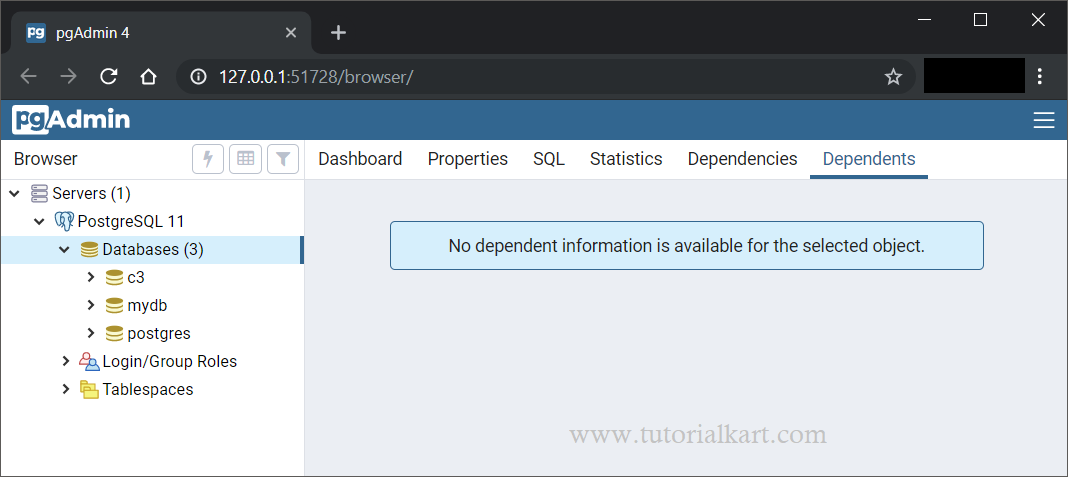

- UPDATE POSTGRESQL TO ALLOW USER CONNECTION TO DATABSE PASSWORD
- UPDATE POSTGRESQL TO ALLOW USER CONNECTION TO DATABSE WINDOWS
“trust” skips authentication entirely and simply accepts any valid username without challenge. METHOD specifies the authentication protocol to use. USER specifies what users the line refers to or “all” for all usersĬIDR-ADDRESS specifies the network limitations for remote connections, using network/netmask syntax TYPE determines the kind of access, either “local” for connections from the same server or “host” for remote connections.ĭATABASE specifies what database the configuration line refers to or “all” for all databases

0.1 / 32 trust # IPv6 local connections: host all all :: 1 / 128 trust # remote connections for nyc database only host nyc all 192.168. # TYPE DATABASE USER CIDR-ADDRESS METHOD # "local" is for Unix domain socket connections only local all all trust # IPv4 local connections: host all all 127.0. The “HBA” in the file name stands for “host based access”, because in addition to allowing you to specify the authentication method to use for each database, it allows you to limit host access using network addresses. PAM authentication is an option if you are on Linux or Solaris and use the PAM scheme for transparent authentication provision.Īuthentication methods are controlled by the pg_hba.conf file. The OpenLDAP server bundled with most Linux distributions provides an open source implementation of LDAP.Ĭertificate authentication is an option if you expect all client connections to be via SSL and are able to manage the distribution of keys. LDAP is another common enterprise authentication method.
UPDATE POSTGRESQL TO ALLOW USER CONNECTION TO DATABSE WINDOWS
Using SSPI, PostgreSQL can authenticate against Windows servers. Kerberos is a standard enterprise authentication method, which is used by both the GSSAPI and SSPI schemes in PostgreSQL.
UPDATE POSTGRESQL TO ALLOW USER CONNECTION TO DATABSE PASSWORD
Password is the basic system where the passwords are stored by the database, with MD5 encryption. For production purposes, the following methods are commonly used: PostgreSQL supports many different authentication methods, to allow easy integration into existing enterprise architectures. A connection with the command line psql terminal will pick up the SSL option and use it by default: Since the default SSL connection mode is “prefer”, you don’t even need to specify an SSL preference when connecting. Once you connect with the new connection, you can see in its properties that it is using an SSL connection.

In PgAdmin, create a new server connection (File > Add Server…), and set the SSL parameter to “require”. With the server enabled for SSL, creating an encrypted connection is easy. Now re-start PostgreSQL the server is ready for SSL operation. keyĬopy the server.crt and server.key into the PostgreSQL data directory.Įnable SSL support in the nf file by turning the “ssl” parameter to “on”. crt # Set the permission of the key to private read/write chmod og - rwx server. key # Convert the certificate into a self-signed cert openssl req - x509 - in server. req # Strip the passphrase from the certificate openssl rsa - in privkey. # Create a new certificate, filling out the certification info as prompted openssl req - new - text - out server.


 0 kommentar(er)
0 kommentar(er)
